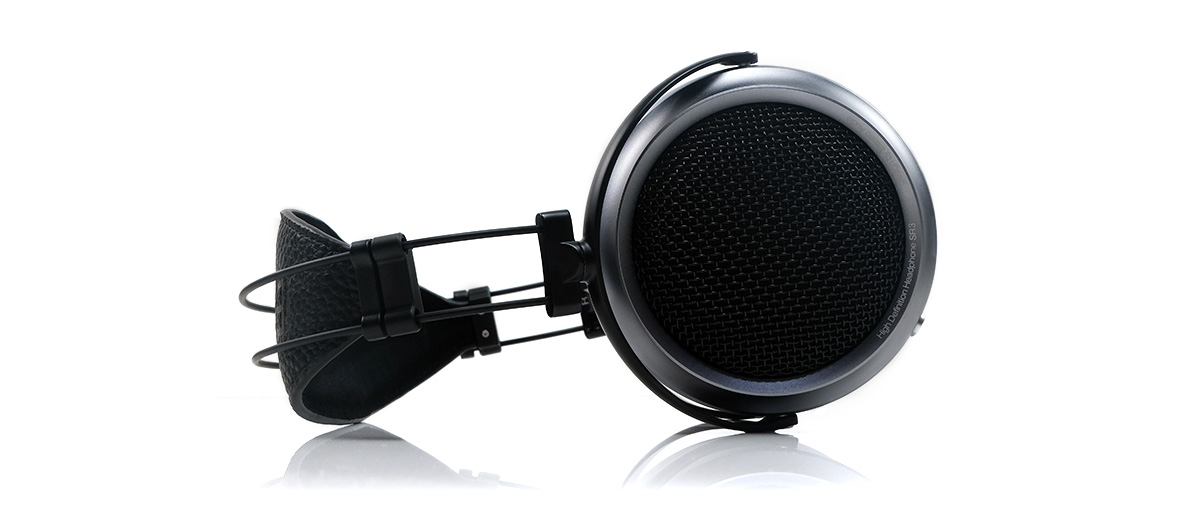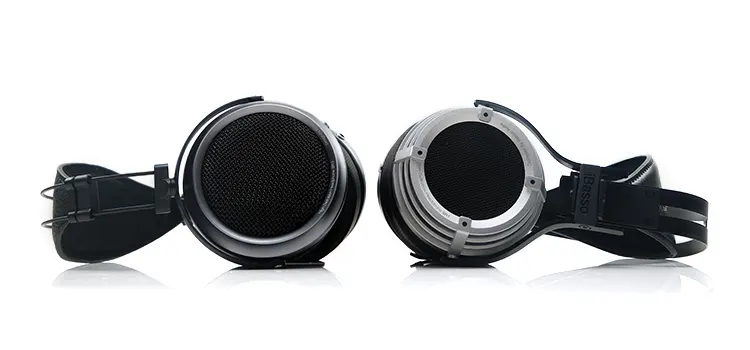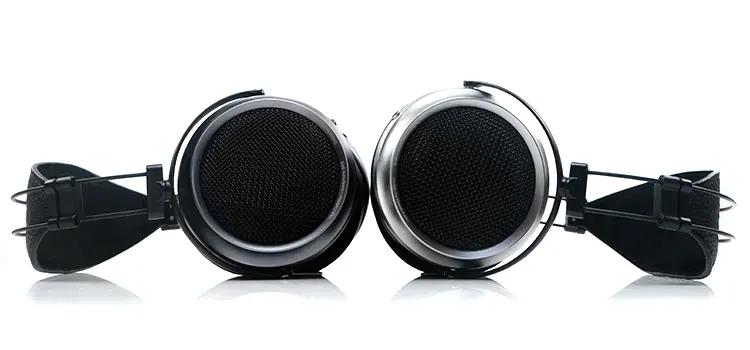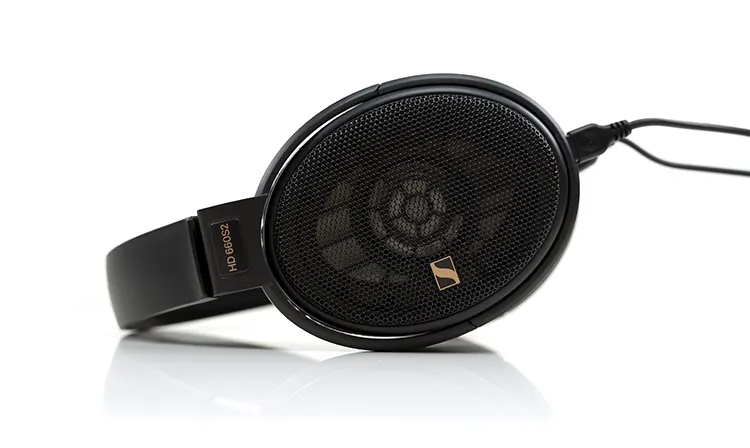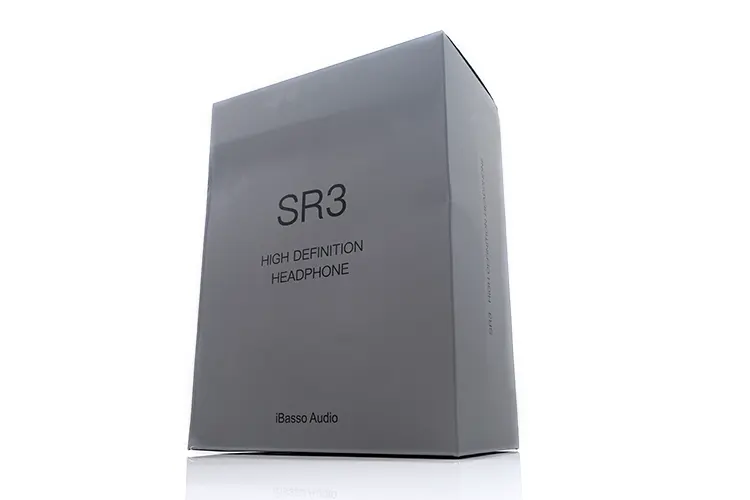Select Comparisons
The following comparisons to the SR3 were completed using a mix of the Feliks Audio EUFORIA evo, the Auris Audio HA-2SE+, and the iBasso DX320 MAX Ti as our main amplifiers and sources. All compared headphones were equipped with their stock cables and ‘Type A’ default ear pads.
iBasso SR1
The first of the SR headphones series, the SR1, was launched back in late 2018 and you can read our full review of the SR1 from mid-2019 here.
Technical
In many ways, these two headphones are not that different internally. Both use a 50mm dynamic driver, both have bio-cellulose diaphragms with silicone suspension and Tesla magnet technology for improving the impulse response performance, maximizing the dynamic range, and lowering distortion.
The biggest internal difference I believe is in the new CCAW (Copper Clad Aluminum Wire) voice coil with the SR3 now rated at 150Ω as opposed to just 22Ω from the original SR1. That sort of changes the user scenario fundamentally away from portable to the desktop for optimal driving and voltage requirements.
In some ways, this has been reflected in the choice of cable for the SR3 with its supply of 4.4mm and 6.35mm adaptor rather than the SR1’s 3.5mm with 6.35mm adaptor. iBasso is saying you need good power, either from a source with a good balanced-capable voltage swing or an amplifier with a stronger voltage bias.
The sensitivity is relatively similar at 106 dB @1kHz 1Vrms for the SR3 and 108 dB on the same weighting for the SR1 so volume headroom and current should not be an issue with either headphone.
It’s a clever move because iBasso DAP voltage rating and performances have traditionally been better than most for pairing with headphones that have higher loads.
Design
This is where things diverge hugely. The SR3 is a sleeker-looking headphone compared to the bulkier complex complex-engineered SR1.
Mind you, the weight differential is not hugely different at 395g for the SR3 compared to 420g for the SR1. Both are not the lightest dynamic driver headphones out there at this price point but they do well in mitigating the weight with similar quality pads.
Now, when the SR1 first came out, it was supplied with non-perforated pads which most felt left the sound a little veiled. They were replaced with the PT1 pad being shipped out to the owners of the SR1.
That PT1 pad is now the stock pad on the SR3 so the lateral clamping and tactile feel of the pads should feel almost the exact same. Any additional weight from the SR1 I find comes with the heavier spring steel headband on vertical compared to the very light nitinol rods on the SR3.
One area where the SR1 does have an advantage over the SR1 is the headband adjusting system. It’s a notch-adjusting system on the SR1 but smoother sliding on the SR3 but that smooth slide is held in check by the check block which is fixed in place by 2 Torx screws. That is awkward and time-consuming to adjust.
The cable on the SR3 is a huge improvement on the older nylon jacketed SE cable from the SR1. The silver-plated, single-crystal copper has a softer PVC twisted finish compared to the nylon jacket of the SR1 cable making it more malleable for daily use. It also simply looks much nicer.
Performance
The two biggest changes here are the flatter and more linear-sounding lows of the SR3 combined with a more acoustically open midrange and treble presentation. In short, the SR3 sounds more balanced in its tuning with the SR1 a shade darker and more bass-biased.
The SR1 pumps up the sub-bass and leaves in a bit more mid-bass bloat that travels almost all the way up to around 1k. You can hear that difference right away so if you are after the ‘fattest’ and warmest sounding bass of the three SR headphones then the SR1 is going to be your pick.
However, it can get in the way of things and despite the improvements from the perforated pads over the older non-perforated versions, it still sounds slightly muted compared to the SR3, particularly through the mids. The bloom in the bass can also sound more dominant and not as well balanced in relation to its midrange presence.
The SR3 seems to fix all that in a manner of speaking. It has a neutral to slightly elevated bass response and is very close to a Harman Target ideal for the bass shelf below 60Hz. It does offer a raised mid-bass presence up to 300Hz that improved the impact noticeably but otherwise it stays quite neutral up to around 2k.
Arguably, with better bass-to-mids separation and slightly less rumble, the SR3 delivers improved space for the clearer mids to shine. And that is where that second key difference lies.
On the SR1, you are hitting a bit of a wall acoustically with upper-mids and treble not dispersing in a natural manner. The SR3’s more open performance allows notes to dissipate in a more natural fashion.
iBasso SR2
The second of the SR series of headphones, the SR2, was launched in mid-to-late 2020 and brought about a number of significant design changes, many of which are still with the SR3 as of today.
Technical
Internally, the SR2 bears a closer relationship to the SR1 design than the SR3. Granted, all 3 headphones use the same 55mmm dynamic driver with a bio-cellulose diaphragm, silicone suspension, and Tesla magnet suspension.
However, the SR2 impedance rating is not that far off the SR1 at 24Ω compared to 22Ω so either it is essentially the same voice coil or one with similar winding properties. Either way, these have a much lighter load than the 150Ω CCAW voice coil used inside the SR3.
That makes the SR3 OTL and modern SETA amplifier friendly whereas the SR2 will be more at home with lower voltage desktop amplifiers and portable sources.
Both the SR2 and SR3 are fairly sensitive though so current and volume headroom will not pose a problem, even with weaker portable sources at 108 dB @1kHz and 106 dB @1kHz respectively.
I had remarked on the cable termination choices before in the SR1 comparison and it is more or less the same case here for the SR2 comparison. The switch to 4.4mm and 6.35m conversion and the dropping of the 3.5mm SE plug from the SR3 stock cable sends out a stronger message that the SR3 needs a stronger voltage supply.
Design
The shift from the SR1 to the SR2 was a huge change in terms of aesthetics and design cues, going from over-engineered to sleek and minimal.
In truth, not a huge amount has changed in going from the SR2 to the SR3 for its external visuals save for a darker anodized color scheme and a more ‘home audio’ orientated cable.
Am I complaining? Not a chance, save for the Torx screw adjusting on the blocks, which by the way are now anodized metal instead of plastic, both of these 395g headphones are very comfortable to wear.
You still get those anodized aluminum enclosures, the low-profile nitinol rod headbands, and a thick genuine leather pressure strap with swappable leather pads.
The pad choices are the same for both headphones with PT1 as stock and the accompanying spare pads with the larger perforation design. Both are relatively simple enough to change and both are very comfortable to wear.
But a hint to iBasso for any potential SR4, if you are going to continue to use the nitinol rod system and Torx screw-released adjusting blocks then please include a screwdriver in the accessory lineup similar to the DAP amp modules.
Performance
The SR2 has a more colored or accentuated sub-to-mid bass and upper-treble tuning whereas the SR3 comparatively nails it better through the mids.
Arguably, the SR3 delivers a more balanced frequency emphasis and tonal coloration whereas the SR2 is one of contrasts with a stronger fundamental and more warmth on the lows but a sharper more ethereal tone on the highs beyond 5-6k.
The SR3 keeps it tighter and more neutral or linear on the lows save for a mid-bass bump that adds some pleasing punch to its delivery. It will sound faster and more responsive to the longer decay and bloom of the SR2 low-end.
The SR3 is not quite as warm through the upper-bass and lower mids either and given the SR2’s stronger upper treble emphasis the SR2 mids and vocal timbre create more of a mix of bloom, weight but also a slightly sharper overtone on percussion and higher pitching vocal tones.
I don’t hear that with the SR3 which has a better balance throughout the mids. It’s not as forced sounding with a more even harmonic balance throughout. Not as weighty either but the note timbre is more consistent throughout and in particular, mixed voice male rock vocals shine on the SR3.
Neither headphone is sharp sounding, rather just some of the attack and leading edges of the SR2 on the higher pitching instruments will sound comparatively glassier in tone where the same notes break a little softer and more liquid-like on the SR3.
Sennheiser HD 660S2
The HD 660S2 is a second-generation open-back dynamic driver headphone from the feedback Sennheiser received from the first-gen HD 660S. It was released earlier this year with our review of the HD 660S2 completed a few weeks ago.
Technical
The Sennheiser dynamic driver is smaller than the SR3 alternative at 42mm in diameter with a slightly smaller 38mm diaphragm. Both use aluminum voice coils with the Sennheiser version in-house design and iBasso goes with a copper-clad aluminum wire CCAW branded voice coil.
Both headphones put an emphasis on maximizing the impulse of their respective drivers by maximizing the surrounding magnetic force. In the case of the HD 660S2, a further reduction in the weight of the coil and maximizing the airflow system. iBasso’s system is perhaps more complex with an underlying silicone suspension system.
Both of these headphones are high impedance loads with the HD 660S2 the higher of the two at 300Ω compared to the 150Ω rating of the SR3. If you have a good quality OTL amplifier with a stronger voltage bias then both headphones will mesh very well.
There is not a huge difference in efficiency either with the HD 600S2 rated at 104 dB @1 kHz, 1 Vrms, and the SR3 just a little higher at 106 dB @1 kHz, 1 Vrms. In our real-world testing, the HD 600S2 needs a little bit more juice from our test amplifier, the EUFORIA evo.
Design
The HD660S2 uses a classic single headband system with an iconic form factor that has been largely unchanged in the last two decades.
It is a significantly smaller and lighter headphone compared to the SR3 at 260g compared to 395g. Much of that lightness is down to the use of plastics throughout the HD 660S frame whereas the SR3 has what I consider a more durable aluminum and nitinol build.
For my head, the HD660S2 is also a tighter fit with more lateral clamping pressure. So despite the reduced weight I honestly find the SR3’s pressure distribution much better with its pressure strap system way ahead of the old-school single headband of the HD 660S2.
Not that the HD 660Ss is uncomfortable, far from it. Rather, its ovoid cup design and closeness to my ears give a much closer fit and you do feel the lateral pressure more than the SR3, at least when the pads are new and not flat.
I will say though that the SR3’s Torx screw system is holding it back in terms of ease of use when adjusting for exact size. Something which the HD 660S2 does better at.
The SR3 cable is a bit better for me compared to the classic Sennheiser cables. The Sennheiser cables cover a lot of bases matching the SR3’s 4.4mm and 6.35mm options but also offering an additional 3.5mm extension cable.
However, those 2 options come on separate cables whereas the more attractively built SR3 cable has the extension system on one cable saving a lot of time switching cables.
Performance
A lot of differences here but the biggest impact came from their respective staging qualities with the SR3 sounding more open, pitching deeper and wider, and also with a slightly more relaxed mid-bass and midrange imaging relative to the listener.
The HD 660S2 is more intimate and for some genres that means it is more immediate sounding, especially for male vocals and forward mid-bass punchiness. The HD 660S2 has more of a lower-mid lift and a stronger ear gain emphasis around 800Hz up to 3k so the overall presentation for me pulls you right in and on top of the stage.
The SR3 relaxes it a little but the larger acoustical imaging also creates more space around vocal imaging so they can and do sound just as clear to my ears and at times more so with slightly higher-pitched female vocals.
No question the SR3 reaches deeper creating a more atmospheric presentation. It especially shows its additional headroom with tracks loaded with ambient background mixes and swirling higher-pitched synth notes.
To be fair, the HD 660S2 imaging accuracy within its smaller stage is excellent but it would not be my first choice for dance hall or arena-type chamber music. However, it does really well with mosh pit and hard rock music where vocals need a bit of thrust and lower-mid guitar timbre needs some elevated presence.
Our Verdict
iBasso should get some serious credit here for how they have progressively developed their headphones with the SR3 a very fine-sounding dynamic driver headphone at this price point.
This is a very balanced and responsive sound signature with excellent staging width and an overall tonal balance that is natural to the ear though switching to something more neutral and cleaner with the additional supplied pads.
It pairs really well with OTL and SETA amplifiers but I would recommend sticking with the stock pads if you are all about weight and power. The spare pads are more nimble and energetic but suck out too much comparative weight from the SR’s presentation for me to enjoy as much. They are also a right pain to install along with the headband adjusting screw system.
SR2 and SR1 owners who rave about bass weight might find the SR3 initially lacking but with the right amplifier, it can reach a satisfyingly deep and even more holographic level when up against similarly-priced competitors.
Hopefully, iBasso can get more of the SR3 into more dealer hands and even get it listed properly on their website. Alongside the HD 660S2, it is a worthy competitor and offers something very different from the Sennheiser juggernaut.
iBasso SR3 Technical Specifications
- Driver type: Bio-cellulose 50mm dynamic driver
- Structure: Open
- Frequency range: 3Hz-40kHz
- Sensitivity: 106dB at 1kHz
- Impedance: 150Ω
- Rated Power: 50mW Distortion: <1% (at 1kHz /1mW)
- Cable Plug: Gold-plated 4.4mm with 6.35mm extension
- Cable length: 1.6m
- Weight: 395g (excluding wire)

